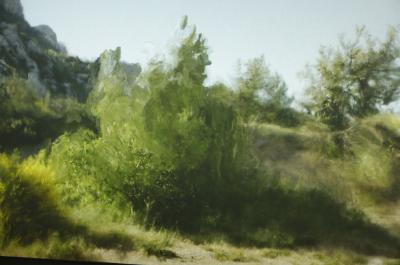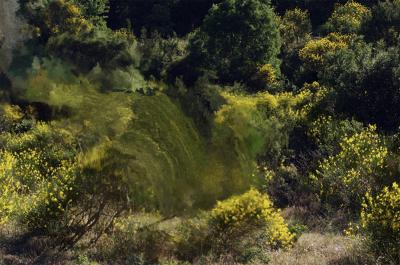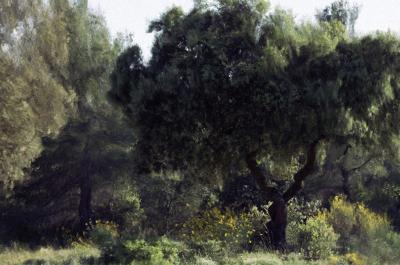A. Davide Quayola
"Pleasant places"
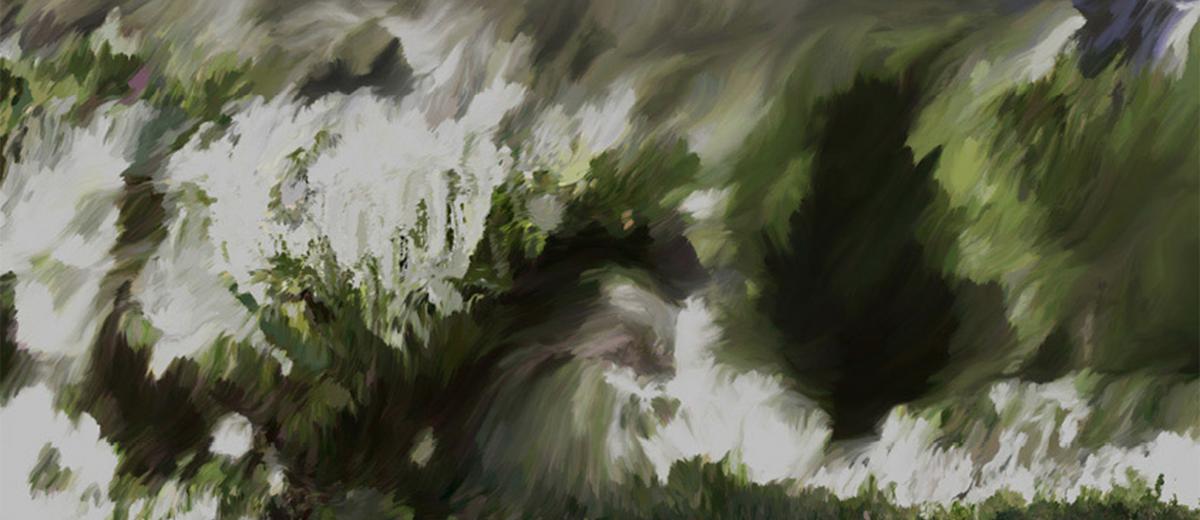
Titled like the first series of landscapes prints produced in Holland in the Seventeenth century, Pleasant Places consists of a series of digital paintings exploring the boundary between representation and abstraction.
Inspired by the work of Vincent Van Gogh, Quayola has returned to the same countryside of Provence 125 years later.
The landscapes serve as a point of departure – a pretext to shape an inner motion and vision.
Through the misuse of image-analysis and manipulation algorithms, Pleasant Places challenges the photographic image and proposes alternative modes of vision and synthesis. Familiar landscapes – filmed in Ultra-High-Definition – is shown with meticulous attention to details and to the anthropomorphic shapes of the trees. Then, through the use of custom-software,
the detailed texture of the foliage is reduced to two-dimensional masses of volume veering towards abstraction. As the outlines of trees and shrubs get blurred, nature becomes dense and almost impenetrable. The resulting compositions remain, suggestively, suspended between representation and abstraction, between the depth of the natural scenery and the surface of the screen.
In contrast to this vision, raw data-visualisations of colour and motion information follow in sequence the contemplative digital paintings to remind us what really lies beneath the surface. Pleasant Places pays homage to the modern tradition of Western art that takes landscape as a point of departure towards abstraction, reducing the complexity of the world into new alternative synthesis.
BIOGRAPHICAL NOTES
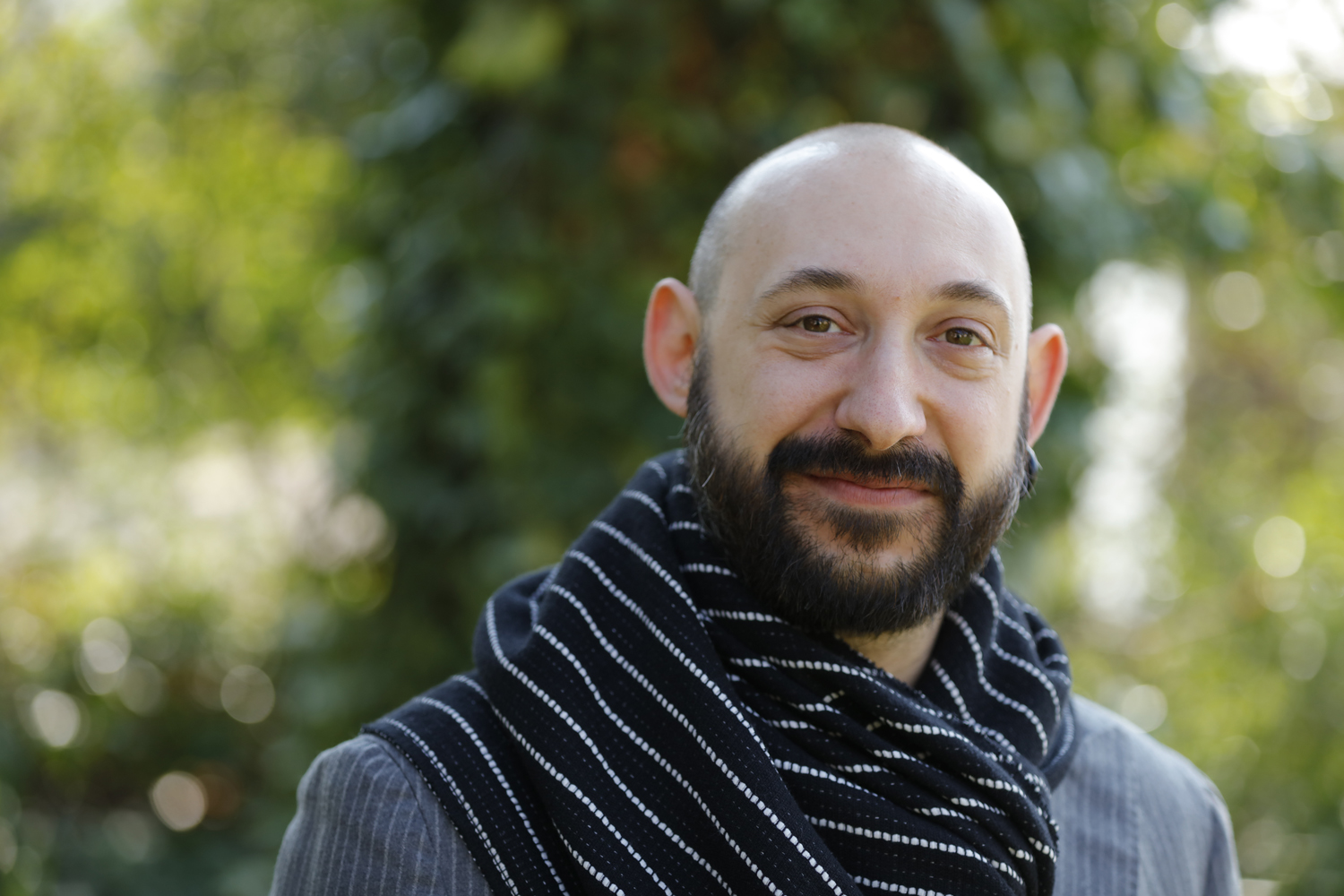
Davide Quayola au Domaine de Chaumont-sur-Loire, 2016 - © Éric Sander
Regarded for his enigmatic video installations, Quayola creates hybrid spaces of animated painting and sculpture. Engaging a practice of audio-visual performance, drawing, photography and software programming, he explores a fine boundary located between the real and artificial.
Special institutional commissions of Quayola’s work have allowed him exceptionally rare access to the art and architecture of churches, theatres and museums in Europe, such as Notre Dame and the Vatican. In his work, original masterpieces and collections become raw canvas, as Quayola anchors a video-based exploration in a conversation about archives, collage, intellectual property and the appreciation of an object. In an age of the Google Art Project, which offers unprecedented access to the literal surface of a painting, Quayola handles the time we spend looking at art as a plastic artifact, something to be sculpted and suspended. The gaze is a place where the logic of a picture unfolds, seemingly excavated from beneath the image.
The first solo exhibitions of Quayola’s work opened at bitforms gallery in May 2012 in New York, and at Young Projects Gallery in March 2012 in Los Angeles. Past displays have included a 54th Venice Biennale project at the Italian Cultural Institute in London and exhibitions at the Victoria & Albert Museum, London; the British Film Institute, London; Gaîté Lyrique, Paris; Palais de Tokyo, Paris; Triennale, Milan; Park Ave Armory, New York; Palais des Beaux Arts, Lille; Museo Nacional d’Art de Catalunya, Barcelona; MoA, Seoul; UCCA, Beijing; Grand Theatre, Bordeaux; Church of Saint Eustache, Paris; Centro Cultural Recoleta, Buenos Aires; Museu da Imagem e do Som, São Paulo; as well as festivals such as Sonar, Barcelona; STRP, Eindoven; Cimatics, Brussels; onedotzero, London; Elekra, Montreal; and the Clermont Ferrand Film Festival, among others.
Also a frequent collaborator on musical projects, Quayola has worked with composers, orchestras and musicians including Ensemble Intercontemporain, Vanessa Wagner, Mira Calix, Plaid, Matthias Kispert and the National Orchestra of Bordeaux.
In 2005 he was awarded a BA from University of the Arts London.
